Crampons for skiing—a specific niche within the specific niche of crampons. Crampons for skiing are unique for a few reasons:
- Ski boots are generally rigid and B3 (full auto) compatible. They are similar to technical climbing boots, however, our skiing objectives are more similar technically to what we may climb in a three season, B2 (semi auto) mountaineering boot. The caveat is high altitude mountaineering, where we often use rigid boots to walk on low angle snow/ice.
- We carry our crampons in our packs much of the day when we bring them skiing.
- Generally, most of our cramponing is on steep snow or moderate ice/neve while skiing. Usually, we don’t spend a ton of time rock climbing.
To read our crampon primer before diving in further, head over to Sam Hennessey’s piece.
These points lead us to the main design principle that has become widespread in crampons for skiing: non-rigid crampon linkages—such as Petzl’s Dyneema cord, Blue Ice’s Dyneema strap, or steel cable for Dynafit. These linkages work well for skiing because our boots provide sufficient rigidity, and ski objectives often don’t require the precision and durability that technical mixed climbing requires. A soft linkage makes for lighter and significantly more compact crampons that can disappear in a pack relative to bulky rigid models of years past.
While each company has a slightly different take on the “soft linkage” crampon, within each brand, one must choose between a full aluminum or hybrid (steel front, aluminum heel) setup. While this has been written about plenty, I’ll say that more skiers could be happy with a good all-aluminum crampon than the internet may have you believe. Steel front points are great for climbing more vertical ice or significant mixed terrain, but most good ski outings don’t include much of that terrain, and saving 50-100g/foot is always welcome. The only real downside of all aluminum crampons in most ski touring situations is long-term durability—with heavy use, aluminum crampons eventually turn into what Adam Fabrikant affectionately refers to as “nubs.” At least they get lighter as they wear!
The other side of this coin is that for the less-than-hardcore weight weenies, a good pair of hybrid crampons will last a long time and do everything we need really well. With options like the Blue Ice Harfang or Dynafit Mezzalama coming in at less than 50g heavier than all-aluminum models, all while being ready to dispatch truly technical ground reliably, perhaps a hybrid setup is a good option for the single crampon quiver of an ambitious ski tourist.
Over this season, some partners/friends and I tested a variety of crampons from Blue Ice, Petzl, and Dynafit. While it would have been great to include Camp, Grivel, and Black Diamond options, I believe the included companies are a step above the rest. While we don’t have every model from each company, we tested a variety of options to give an overview of each system’s strengths and the stats and nuances of the various models between different lineups. There are no “winners” or editors’ picks here, but rather a bit of good information and experience to help the reader be better informed next time they are in the market.

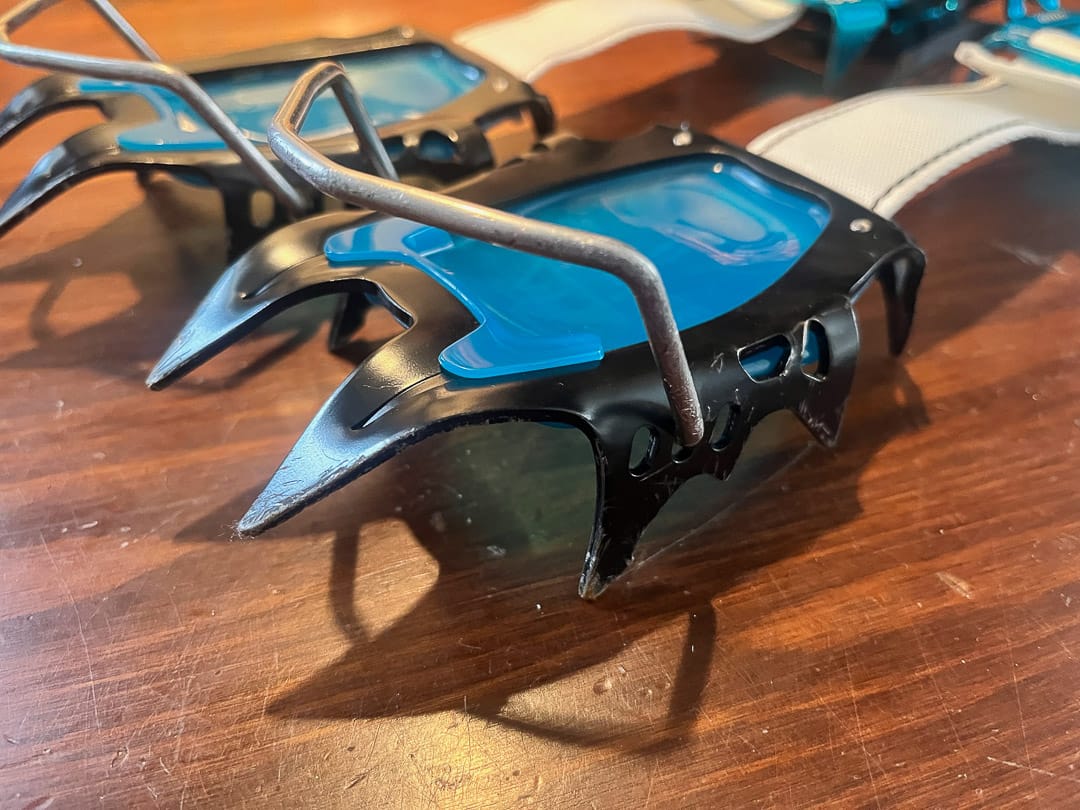

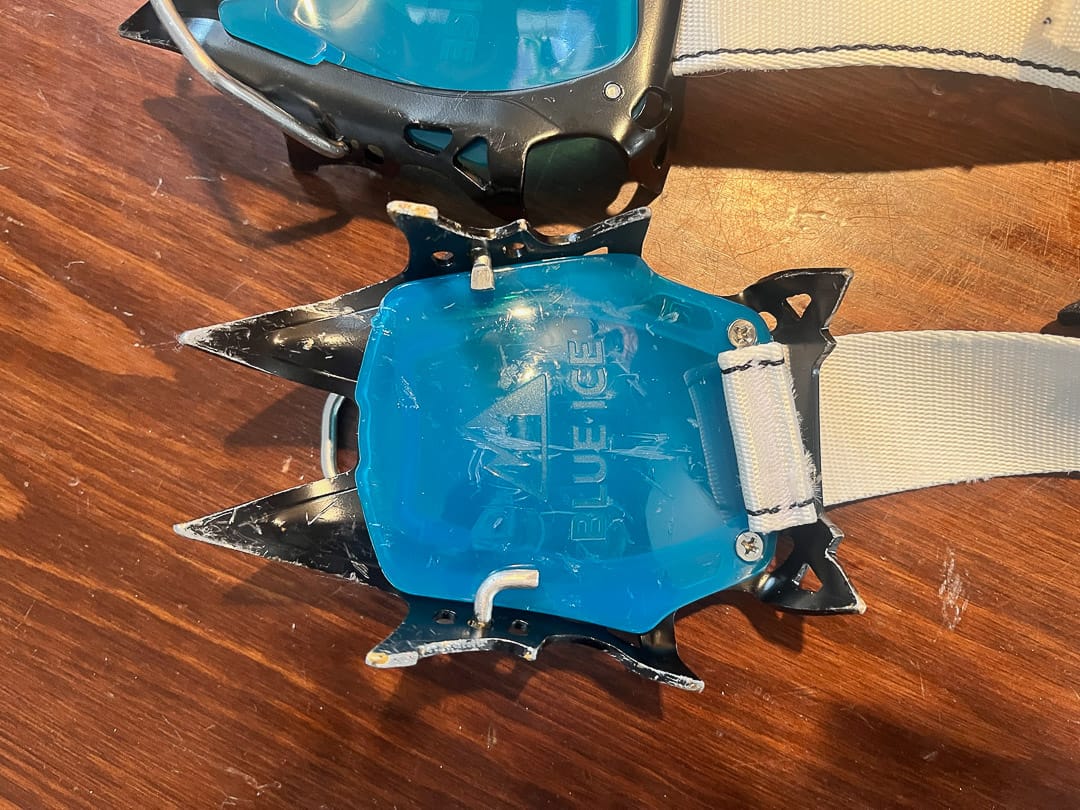
Blue Ice
Our friends at Blue Ice sent the Harfang Tour, Harfang, and Harfang Alpine Hybrid for testing. Blue Ice takes a novel approach to their lightest offerings with a three-piece design—essentially, what would typically be the front section with 6 or 8 points on a traditional crampon is split in two, with a 4 point steel or aluminum front, then two aluminum points at the midfoot, and an aluminum heel (a full steel model is available, but frankly, doesn’t seem like a practical option for most). They also have a more traditional, two-piece design in the Harfang Alpine series—a burley 8 point front paired with the same back as the normal Harfang. Rather than cord, cable, or Dyneema webbing, Blue Ice opts for a 40mm wide Dyneema strap to link the two or three parts. This is a bit more finicky to adjust than Petzl cord-tech, but it is more micro-adjustable, has less stretch/settlement, and seems more durable.
Standard across the line are anti-balling plates, interchangeable toe bails (each pair includes full auto and semi-auto bails), and a fixed cable heel bail with a thumb screw micro adjustment. Though it’s not ski-specific, the semi-auto toe bails are the best I’ve used; they are soft webbing and conform really well for a tight fit on three-season mountain boots. I appreciate the anti-balling plates (it seems like many of my peers don’t mind skipping these), but I despise balled up crampons; it’s annoying at best and dangerous at worst. The micro-adjustable heel lever is key; I found it critical to snug up the thumb screw to avoid shifting depending on the heel welt height. The heel lever also has a functional geometry that snaps down tightly without too much effort. The retention strap uses a nice g-hook to close, but the webbing tends to ice up and be challenging to take off after long boot packing stints.
On all the models, steel and aluminum, the front points share a similar long and sharp geometry. With two toe bail position options, this is awesome for their climbing performance and especially nice on the aluminum models, where companies often have short nubs that limit penetration in firm snow/ice. The Harfang Alpine front section is among the best I’ve used for more technical climbing. Aside from aggressive front and secondary points that are very stable on ice and rock, the 8 point front piece has an outward flare that makes the platform feel very stable and secure with steep French technique or when kicking out/standing on a flat ledge in vertical ice.
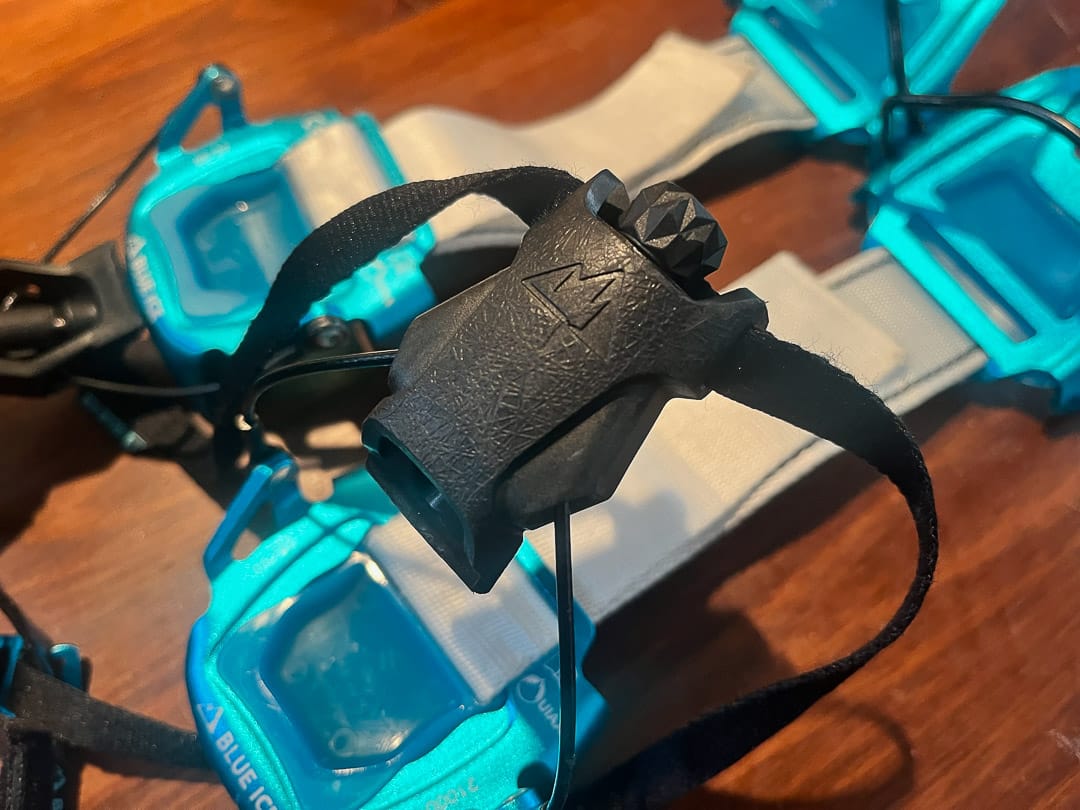
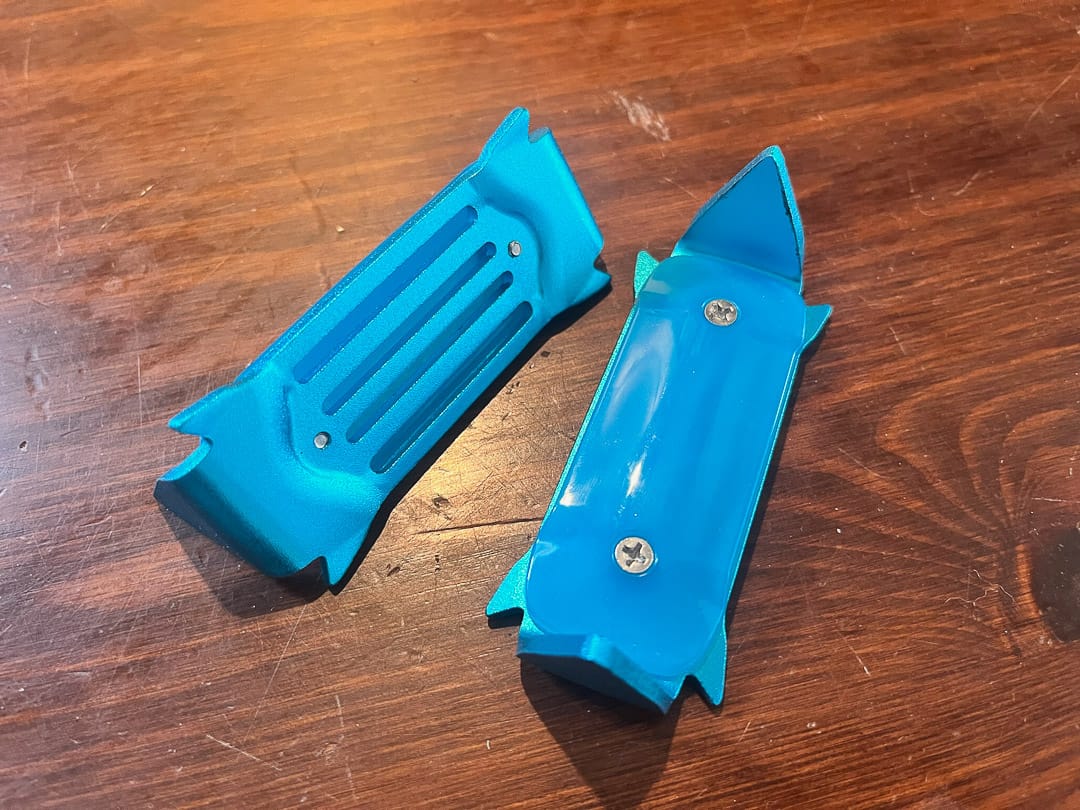
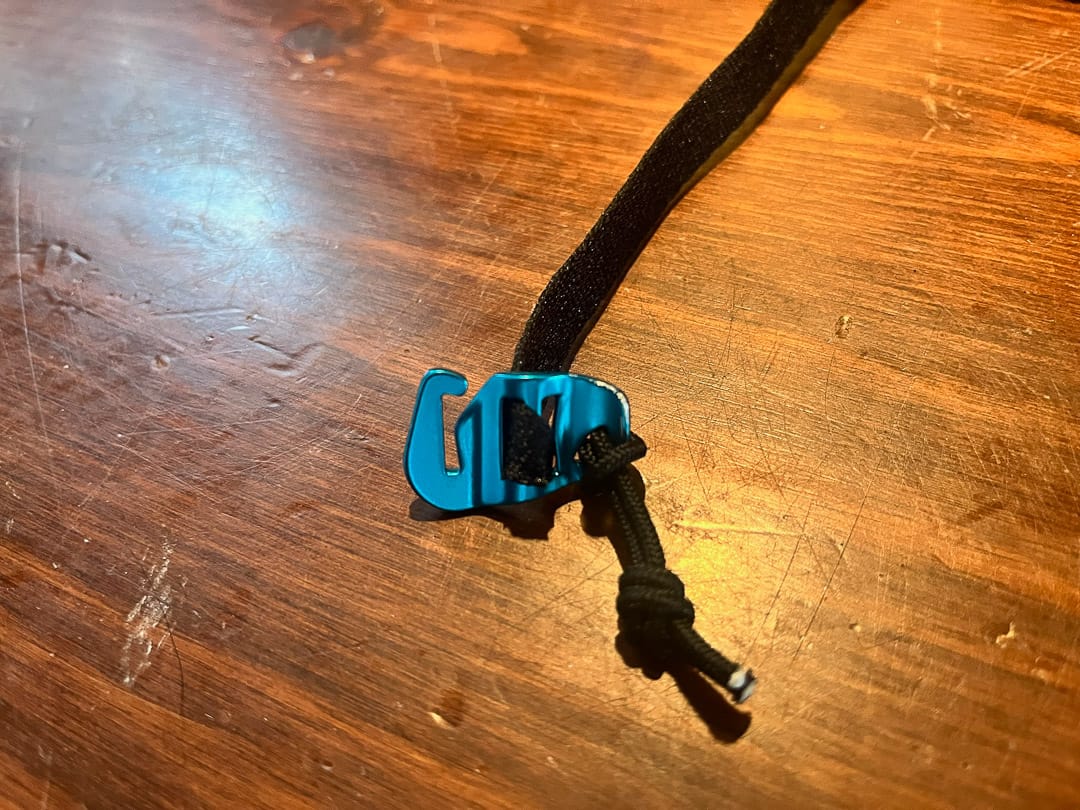
A final note: many friends have removed the middle piece of the three-part crampons. This detracts from the grip in flat-footed techniques but makes for a svelte and incredibly packable setup. The Harfang with steel fronts, no middle, and aluminum heel is perhaps the lightest technically capable option possible and has been used successfully by some of the High Route authors on technical first descents in the Andes, on the Grand Teton, and elsewhere. The standard Harfang model seems to be the sweet spot in the Blue Ice lineup—it is around 200g and extraordinarily capable.
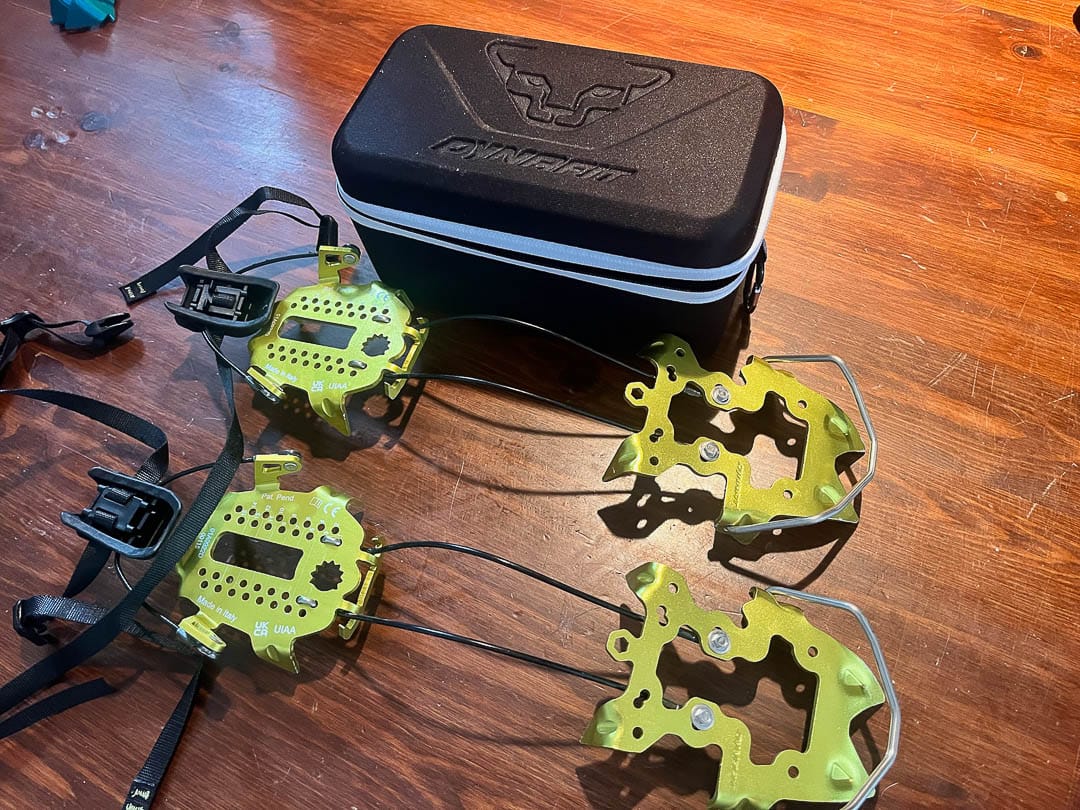
Dynafit
We have been using the Dynafit DNA crampon quite a lot lately. From loose and insecure slab climbing in the Northern Tetons to the Grand Teton’s normal route, they have proven surprisingly capable relative to their light weight. Dynafit also makes the Mezzalama model, which has a steel front section but otherwise has the same geometry.
Using cables, similar to what you might see on a 1kg ski boot buckle as a linkage has some distinct benefits. Namely, there is no stretching/settling period with the Dynafit models; this makes for a much less fiddly setup and less concern about a crampon falling off at an inopportune moment. Conversely, the cables seem less durable/robust than the Dyneema options. The adjustment system relies on a crimped “wiggle” that seems like it could bend or break with enough force/rock encounters, and the cable’s plastic coating is already worn and nicked in many spots.
There are many options for length adjustment: a combined 15 settings on the heel piece with four options on the front cable attachment. This mostly makes up for the lack of other adjustment options like extra toe bail holes or any adjustability in the cable heel bail. I found fitment mostly easy with various boots but struggled when the fit was tight, as the geometry of the heel bail lever is a little odd and doesn’t have much mechanical advantage. The point here is the Dynafit crampons don’t need to be as tight as the Dyneema linkage options, but a nice tight fit still seems worthwhile.
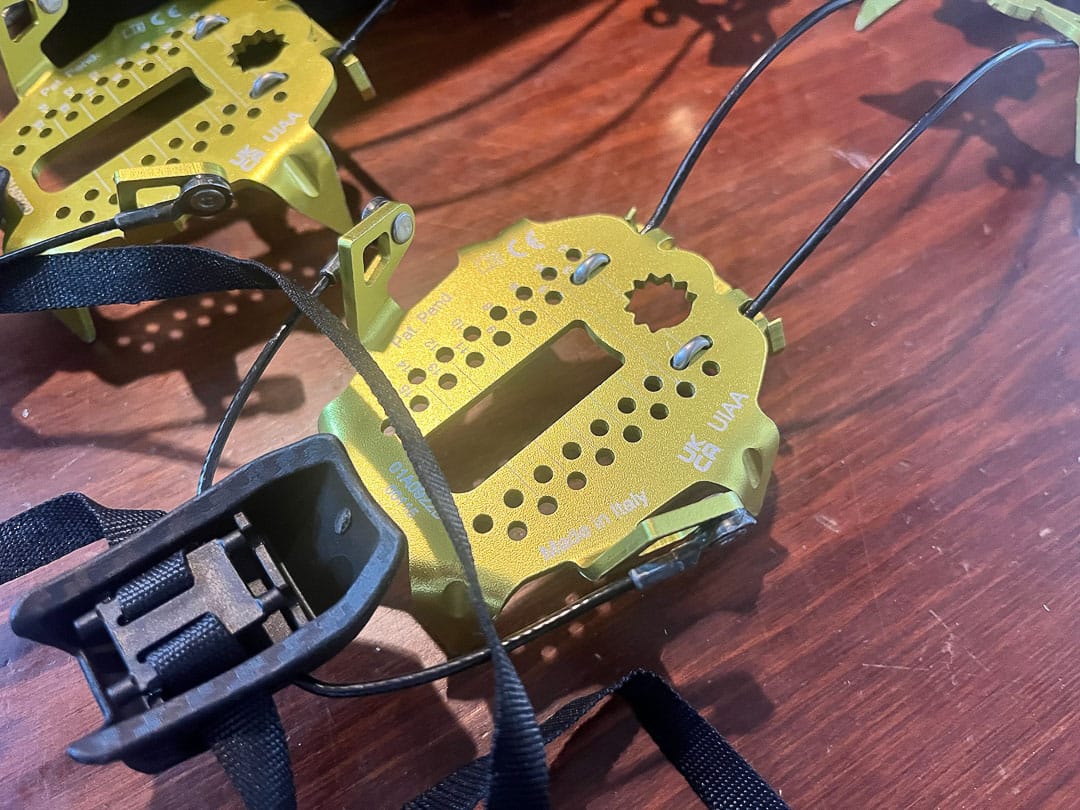
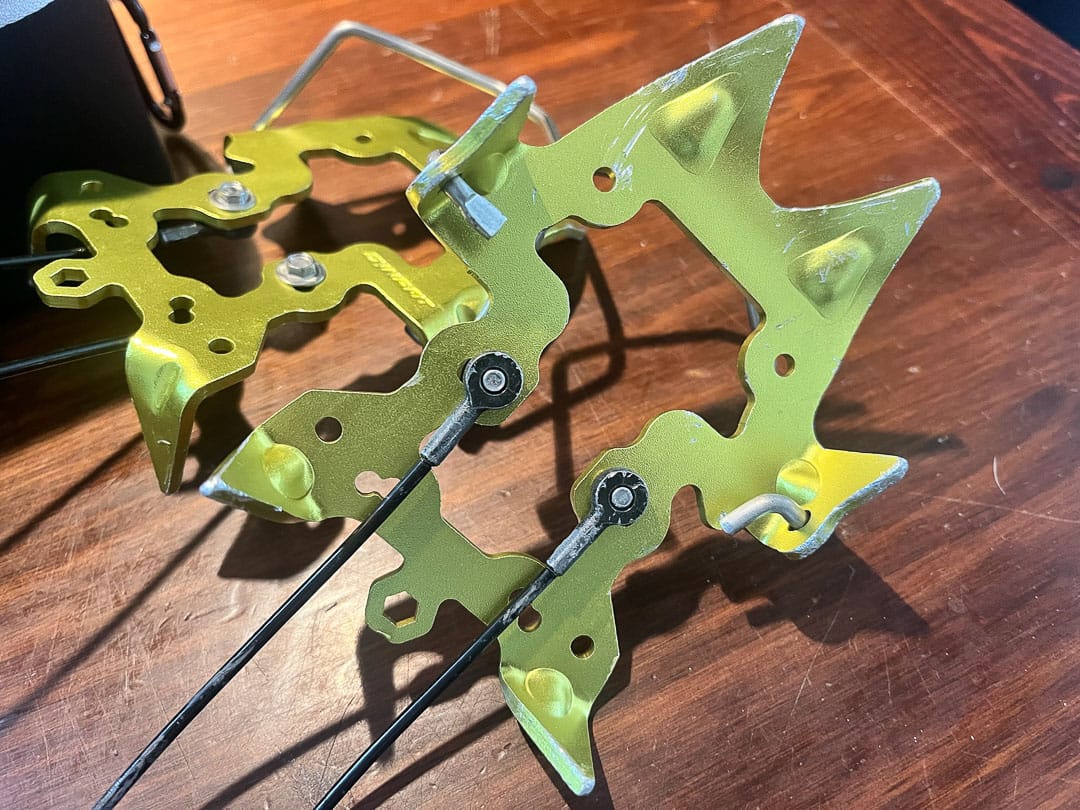
The geometry of the DNA or Mezzalama is extremely minimal, with short front points, 6 points on the front piece, and no excess material to be found. They probably won’t be my top choice for glaciated trips that could have hard alpine ice or significant mixed or ice terrain, but damn, they are nice to carry and work excellent for snow/neve climbing. There is some advantage to the short points regarding the longevity of my ski pants—I seem to catch them a lot less.
I haven’t modified the DNA, but I am interested in adding an anti-balling plate and picking up some spare cables for my repair kit. The strap closes with a plastic buckle that has consistently come undone while postholing—it’s probably worth swapping for a g-hook or something. Thankfully, Skimo.co stocks these parts as they don’t seem to show up anywhere else.
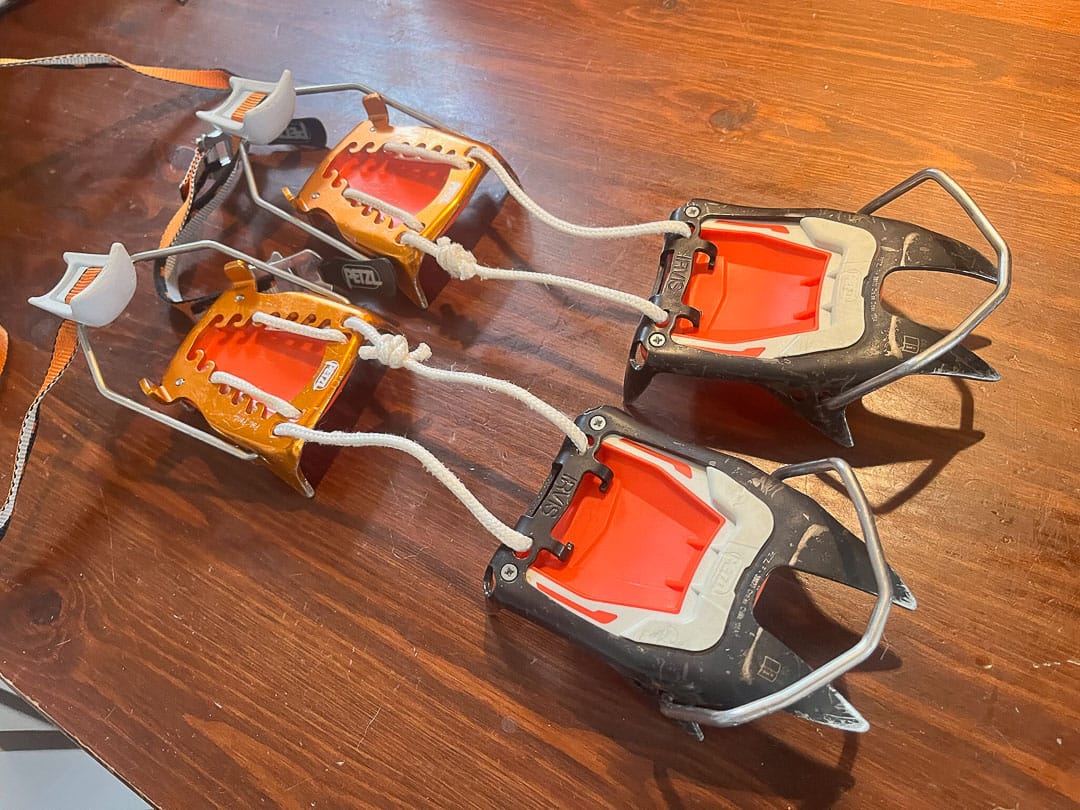
Petzl
Until recently, the Petzl Leopard or Irvis Hybrid were the ski mountaineering crampons. Almost all of my partners were using them; they were the best option available. They still have some distinct advantages over the options above, but the market has certainly caught up and, in some metrics, surpassed Petzl’s offerings.
The Petzl cord-tec system and crampon ecosystem have a distinct advantage of modularity. One could theoretically purchase all three front sections (Dart, Irvis, Leopard) and two heel pieces (Alu/cord-tec and steel w/linking bar), along with some other accouterments, and have a robust crampon quiver for anything from ice cragging to ultralight snow climbing, and everything in between. Almost all of the parts above are interchangeable for many specialized applications, as exemplified by Sam Henessey doing cutting edge alpine climbs with a Dart/Cord-tec aluminum heel combo.
Focusing on the “ski appropriate” models, the Irvis Hybrid and the Leopard, you get two pretty different setups despite similar surficial appearance. They both use the cord-tec system, which uses a pure Dyneema cord (about 4mm diameter) and a system of hooks in the heel piece to adjust. This system has the most stretch/settling of all the systems I’ve used, but it is solved by putting the crampons on and wiggling them around a bit, then re-tightening another notch the night before using them/after adjusting them to different boots. The toe and heel bails have 2-3 attachment holes each for another fine-tuning option. These are the only models in the test that use a “normal” rigid heel bail, which is certainly less finicky, though a touch heavier and bulkier to pack. The verdict is out on durability compared to the Blue Ice strap system, but I’ve always taken a conservative approach and replaced the cord early and often with good success. Meanwhile, many friends have never replaced their cords, and I have yet to hear of a failure here.

The Irvis Hybrid uses a classic retrace style retention strap that is reliable and works great compared to the “higher tech” options. It has long front points similar to the Blue Ice Harfang Alpine, but 6 instead of 8 total points on the front. These climb ice and mixed terrain admirably and have been a trusty companion on many adventures over the past five years or so. With nearly identical weights but two fewer points, as well as the cord-tec feeling a bit less stable and more stretchy than the Harfang Alpine Hybrid’s Dyneema strap, the Blue Ice option seems like the better choice at this point.

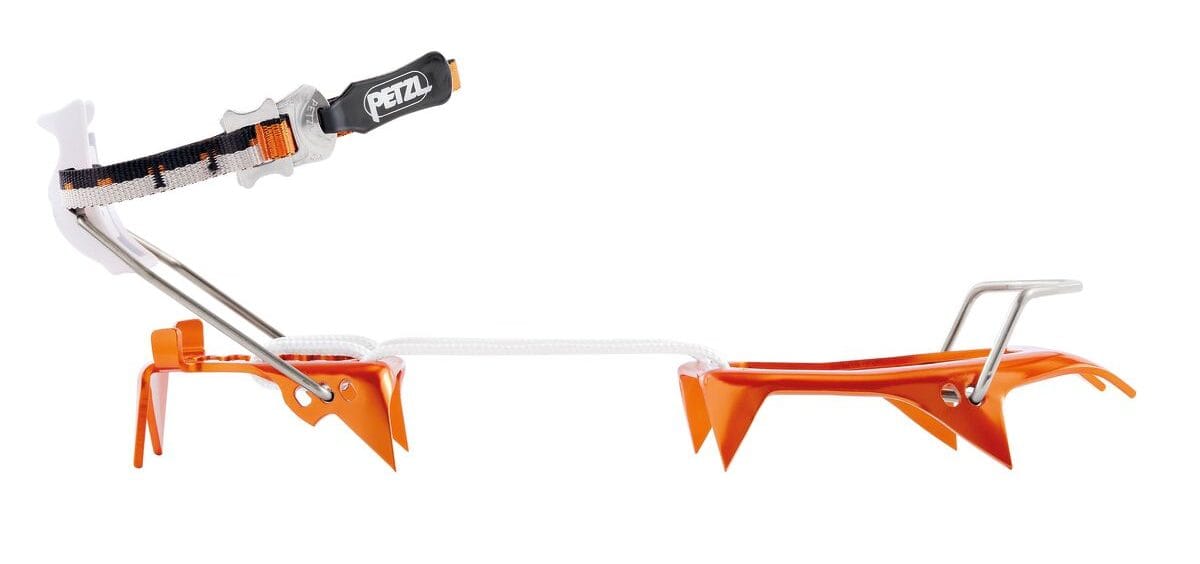
The Leopard, meanwhile, has a much shorter and more compact front part, with stubby front points and no anti-balling plates. These seem purpose-built for snow climbing but have been used plenty in technical terrain. They use a stretchy retention strap with a plastic buckle that seems more fragile but a little easier than the retrace strap on the Irvis. The Leopard, overall, is very similar in many aspects to the Dynafit DNA, just $100 cheaper. You add a bit of durability with the Dyneema cord on the Petzl and an easier-to-use heel bail/lever. You lose out on ease of adjustability/setup and lack of anti-balling plates for the Petzl.
Conclusion and Some Specs
Overall, the crampons presented here have all been excellent. While it is certainly fun to delve into the nitty gritty of each brand and model, it would be hard to go wrong as long as you are shopping in the right category (full aluminum or hybrid).
If I had to eliminate all of my crampons tomorrow and only keep one set, it would be the Blue Ice Harfang. The combination of lightweight and capability is really impressive. If I spent less time in rocky/mixed terrain, I would likely opt for the Dynafit DNA. Packing a 300g bundle that works so well and feels very reliable from an adjustment/attachment perspective is super nice.
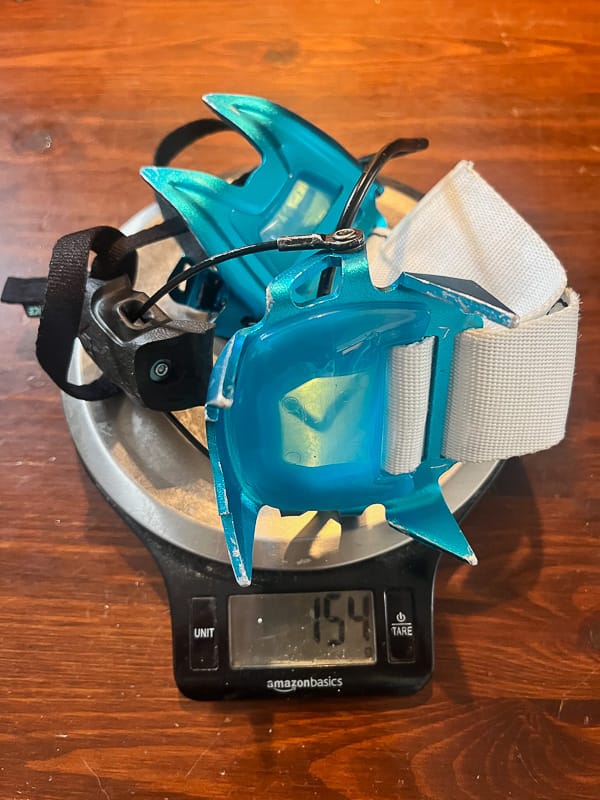
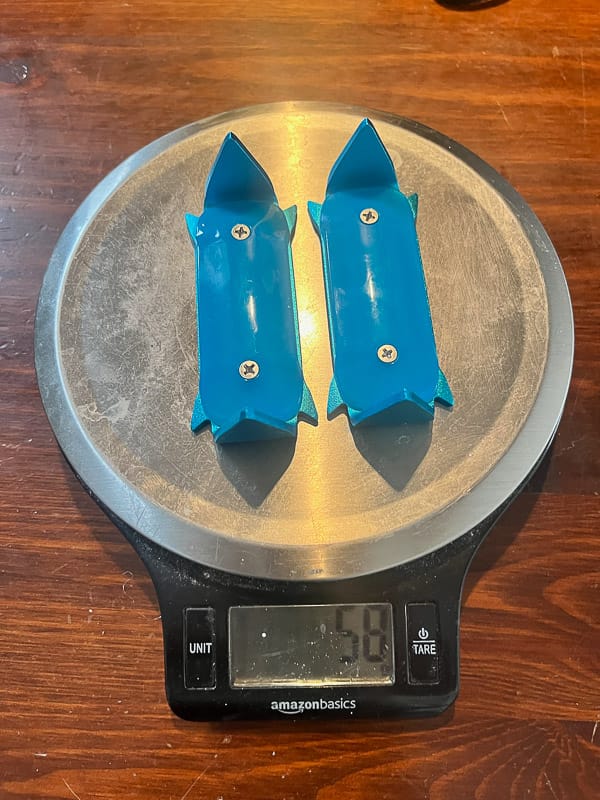
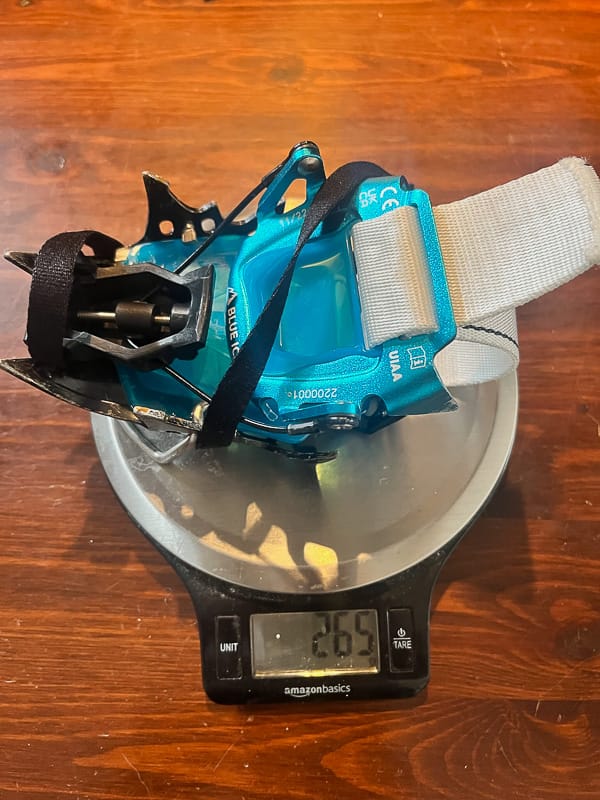
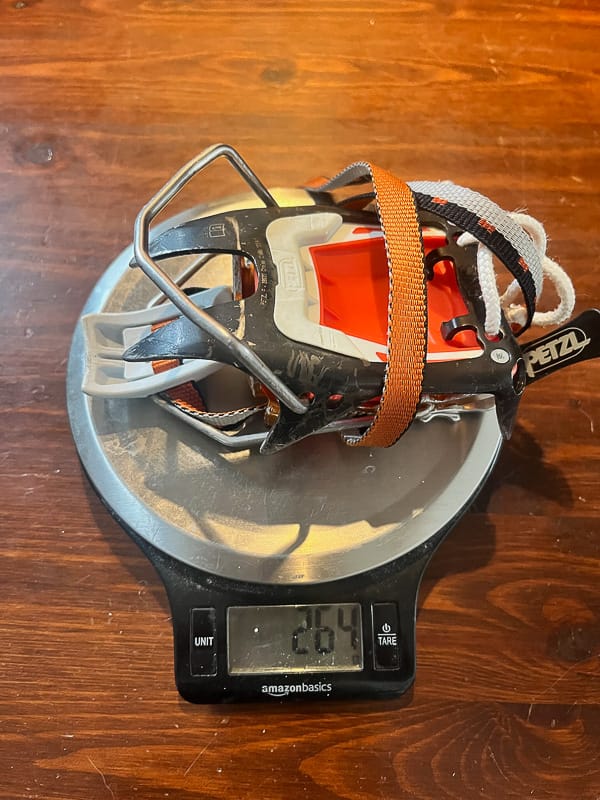
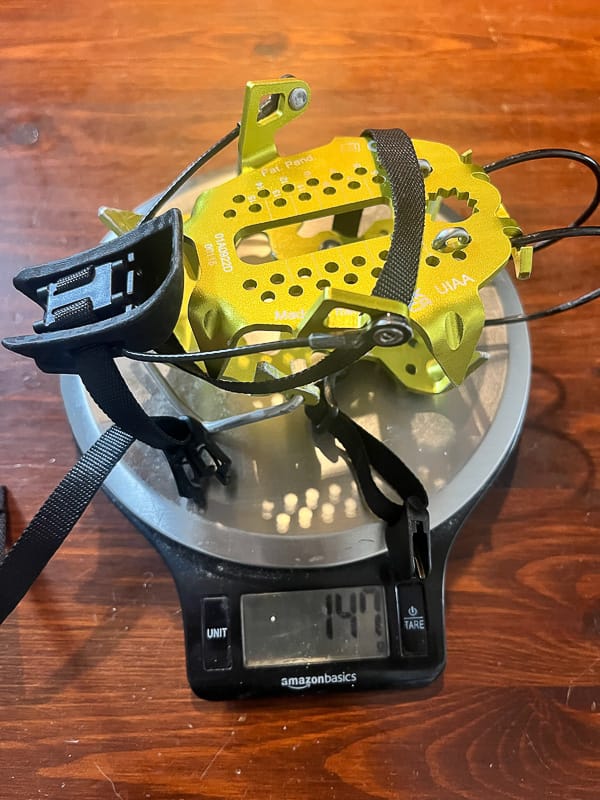






Leave a Reply
You must be logged in to post a comment.